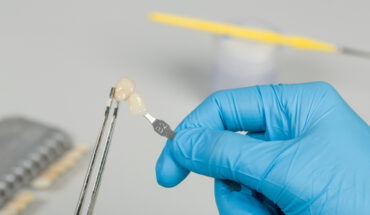
A periodontal disease results from the infections and swelling of bone and gums surrounding and supporting the teeth. The disease involves the pulling away of swollen unhealthy gums from the teeth. This process is accelerated because of the accumulation of pockets responsible for causing tartar or plaque.
In order to reduce or eradicate the impacts of periodontal disease, pocket depth reduction surgery is applied to clear away the infected tissue, tartar or bacteria from the pockets. After this step, the surgery enables the gum adjustment to reduce the pocket size, thus, helping prevent future infection.
The pocket depth often indicates the severity of gum disease. As a result, a dentist is more likely to recommend flap (pocket depth reduction) surgery for cases where one has an advanced gum disease that needs to be treated by root planning or scaling.
Despite pocket depth recovery being less capable of curing periodontal disease, it can stop or slow down its procession. Therefore, periodontitis can cause tooth loss, so it should be treated soon after diagnosis. The diagnosis requires one (the dentist) to follow a specific set of steps that can adequately remove the infected tissues and help avoid the build-up of infection-causing tartar or bacteria in subsequent cases.
Understanding Pocket Depth Reduction Surgery
Also referred to as flap surgery, pocket depth reduction surgery is a procedure that focuses on preventing the accumulation of infection-causing bacteria and tartar under the gum tissues. During the surgery, the dentist clears away the infected tissue, tartar and bacteria.
Gum adjustment then follows. Here, the main aim is to minimize the space (pocket) between teeth and infected gum tissue. Reducing the pocket size makes it possible to reduce the collection of more tartar and bacteria, failure to which there can be future infections to the gum tissue. Moreover, you should remain as stress-free as possible as stress can aggravate periodontal disease in future; thus, making the surgery more complicated and demanding, hence, costly.
The following procedure is followed during the pocket depth reduction surgery:
- To create a gum flap, the dentist lifts and rolls back the gum. This first step allows for the removal of all the bacteria and tartar from the tooth surrounding and root, especially those which are covered by the gum.
- Reducing the pocket depth. This step is achieved by sealing the gum flap and sewing it shut. Dentists often use a putty-like dressing to enhance the protection of the area. The dressing should only be removed later during an appointment for follow-up.
- After removing the dressing, one should allow the stitches to dissolve or remove them, then allow the gum to heal. You can detect the end of the healing process by observing the gap between the gum and the teeth. For instance, the gap will be smaller after healing than before healing. Also, the gumline will recede due to the visibility of more teeth. Therefore, you should keep up with flossing or brushing and cleaning, as doing this will ensure the maintenance of healthy gum tissue.
Conclusion
Periodontal disease has become increasingly prevalent in the recent past. It results from the accumulation of infection-causing bacteria and tartar. This accumulation then leads to the swelling of gum tissue, thus, widening the space (pocket) between the gum tissue and teeth. To treat it, pocket depth reduction (flap) surgery has been adopted in various parts of the world for a suitable result.




